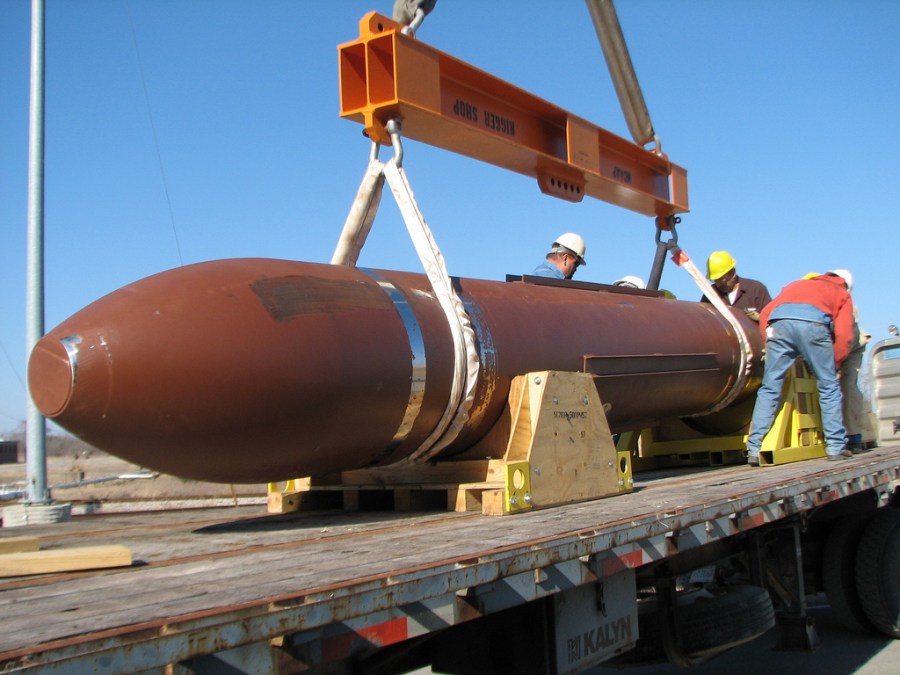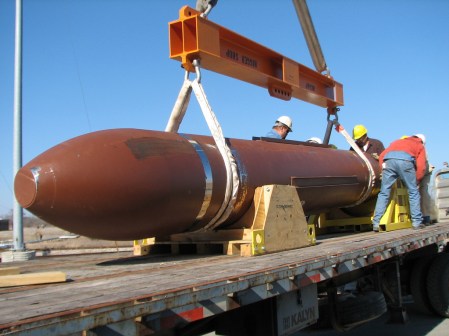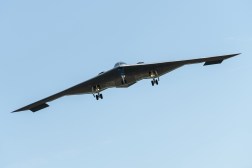Air Force taps ARA to develop Next Generation Penetrator prototypes

The Air Force has awarded Applied Research Associates a contract to build a prototype of the planned replacement for the GBU-57/B Massive Ordnance Penetrator (MOP) bomb, the company announced Friday.
Under the 24-month contract from the Air Force Life Cycle Management Center’s (AFLCMC) Eglin Munitions Directorate, ARA will lead overall design and production of test articles for the air-to-ground munition known as the Next Generation Penetrator (NGP). The munition is intended to be a large weapon that can be deployed by Air Force stealth bombers to attack difficult-to-reach targets such as hardened bunkers, tunnels and other structures buried deep underground.
ARA has also formed a partnership with Boeing — the current prime contractor for the GBU-57/B — for the contract to support development of the weapon’s tail kit and all-up-round integration, according to an ARA news release. The company will produce and test both sub-scale and full-scale NGP prototypes during the contract period.
“We are honored to continue supporting AFLCMC with innovative solutions that advance their mission,” ARA President and CEO Rob Sues said in a statement. “The ARA-Boeing Team has unique expertise, and this award emphasizes the trust that AFLCMC EBD places in ARA’s proven capabilities and long-standing commitment to excellence.”
NGP is intended to be the successor to the GBU-57/B, which gained notoriety after it was used operationally for the first time in June to destroy Iran’s underground nuclear facilities during Operation Midnight Hammer. The 30,000-pound bomb features a BLU-127/B warhead and an integrated GPS-assisted guidance package that allows it to precisely strike targets.
Specific details regarding the capabilities of the NGP are sparse, but defense officials previously stated that assessments of the MOP’s effectiveness during Operation Midnight Hammer could inform future weapon system requirements.
The Air Force requested $73.7 million in its budget proposal for fiscal 2026 to continue research and development for the NGP program. According to budget documents, the service plans to “finish out ground sub-scale testing and to execute full-scale static tests” in FY’26.
Furthermore, a request for information posted to Sam.gov in 2024 indicated the Air Force is looking for a warhead design that is under 22,000 pounds and capable of “blast/frag/and penetration effects.” Furthermore, the RFI noted the service is interested in “possible integration of embedded fuze technology” — which would allow the NGP to sense a target’s distance and more accurately trigger detonation.
“The prototype penetrator warhead design effort should allow integration of technologies acquired and lessons learned under previous penetrator warhead developments to meet performance requirements for the [Hard and Deeply Buried Target] target set,” the document noted.





